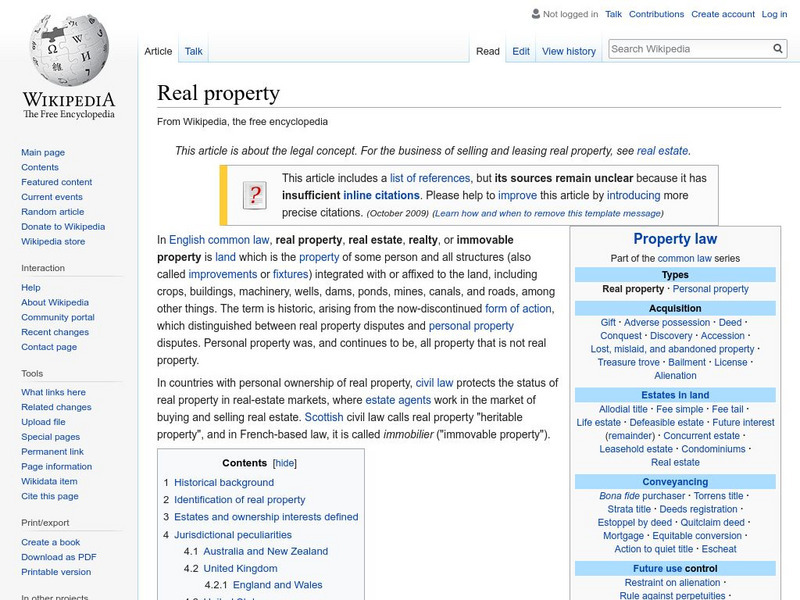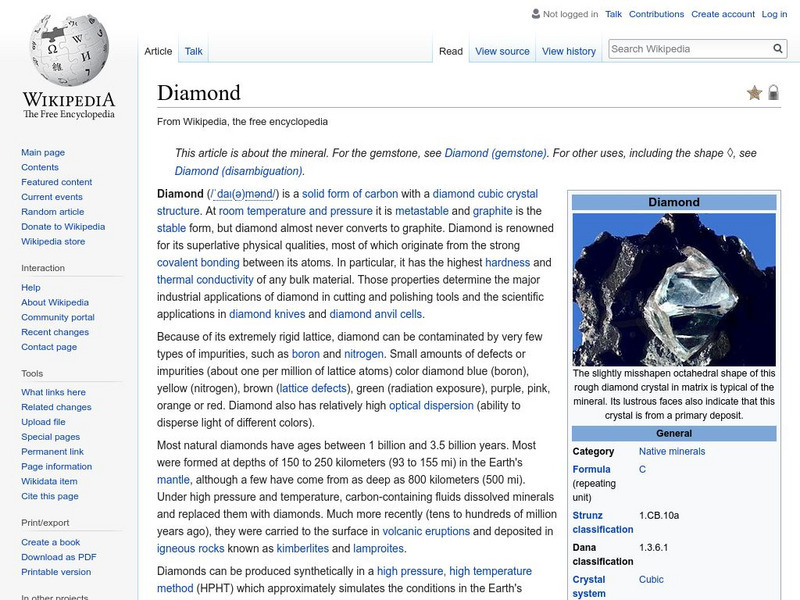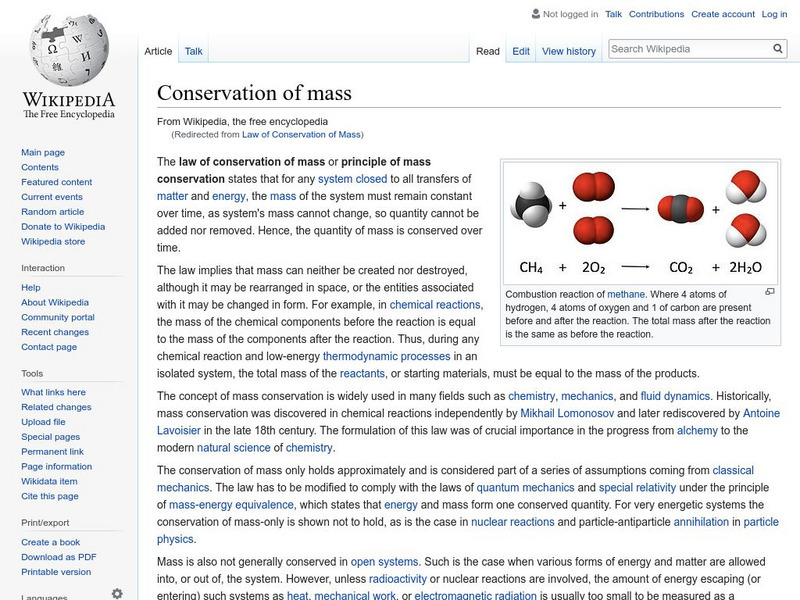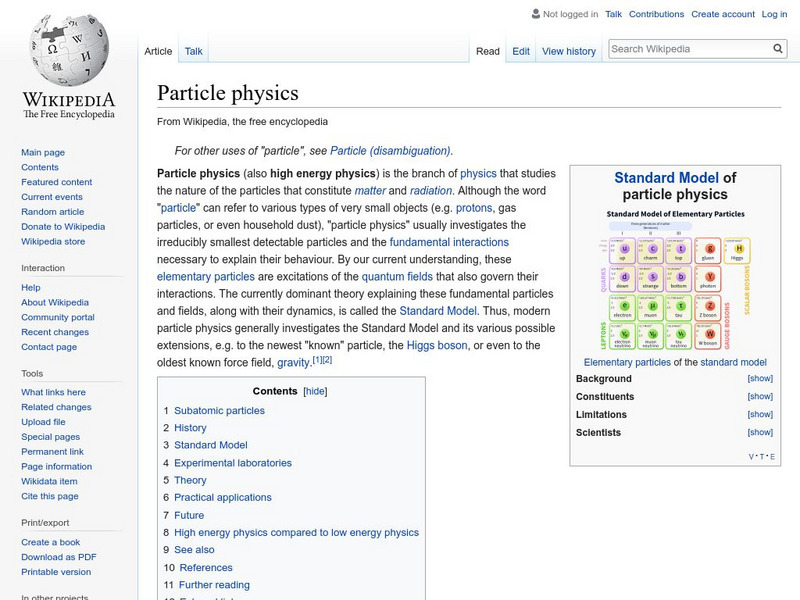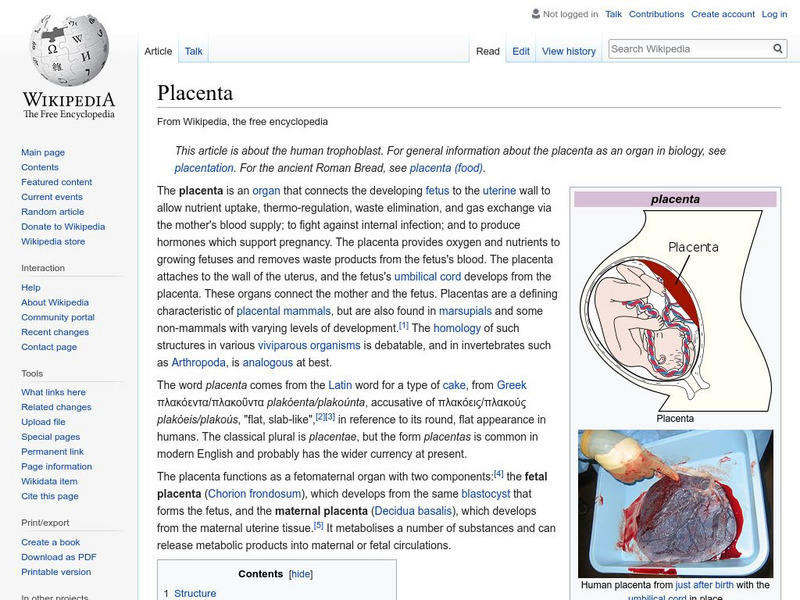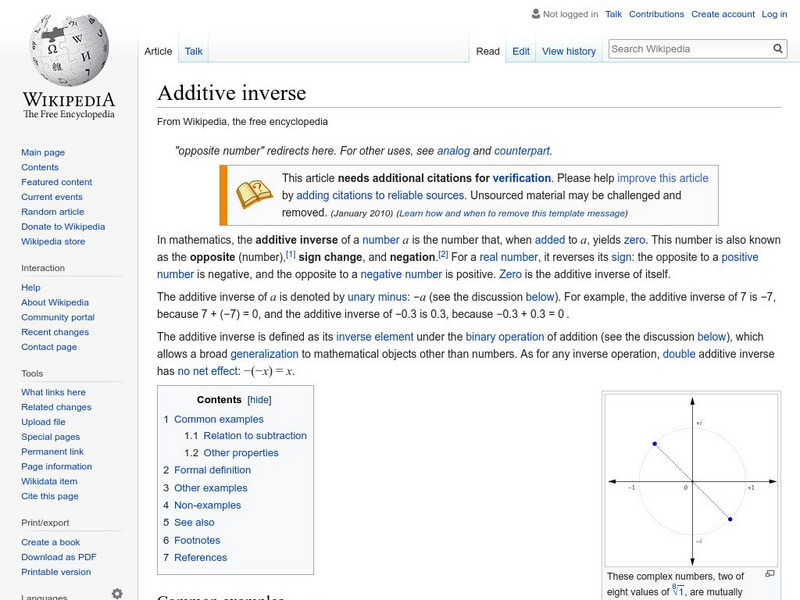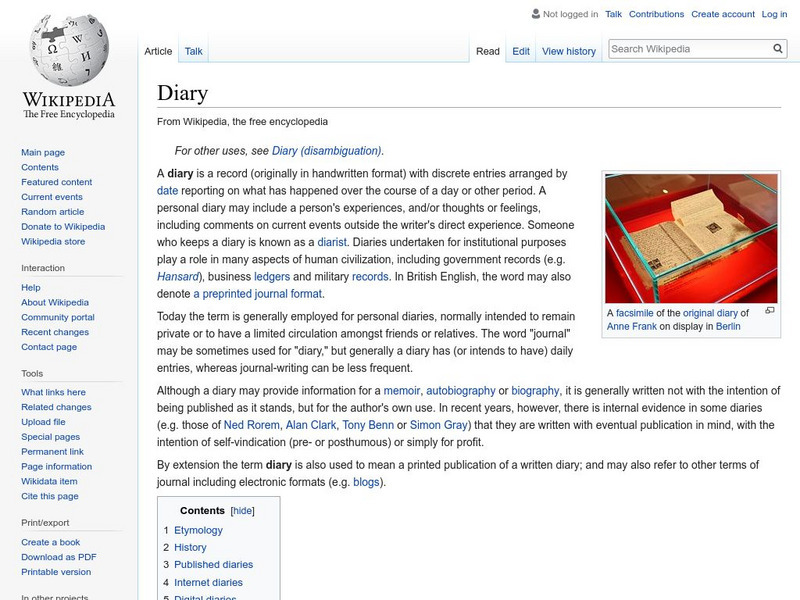Wikimedia
Wikipedia: Percy Bysshe Shelley
The personal life and writing career of Percy Bysshe Shelly is chronicled in this encyclopedia article. Content includes information on his childhood, his marriage to Mary Shelley, his writings, and his tragic death.
Wikimedia
Wikipedia: Real Property
An in-depth encyclopedia article on real property is found here. It discusses what real property is, the ways it can be held, the definitions of estates in land, and the difference in estates being held jointly as joint tenants or as...
Wikimedia
Wikipedia: Diamond
This encyclopedia article provides a detailed overview of the diamond. Content includes a focus on this gemstone's physical properties, the industry that surrounds it, and its history and symbolism.
Wikimedia
Wikipedia: Opal
This encyclopedia article from Wikipedia provides a general overview of the mineral opal.
Wikimedia
Wikipedia: Trigonometric Function
This page from Wikipedia, a free and open-source encyclopedia, covers how to solve a variety of trigonometric equations, most of which involve substitution with a trigonometric identity. The identities themselves are not covered, but...
Wikimedia
Wikipedia: Conservation of Mass
This site from Wilkopedia defines the law of conservation of mass. Included are links to related topics and terms used in the definition.
Wikimedia
Wikipedia: Continental Drift
A brief Wikipedia encyclopedia article on continental drift. It tells what continental drift is, what causes it, and gives examples of evidence that continental drift has occurred.
Wikimedia
Wikipedia: Tycho Brahe
A great overview of the life of astronomer Tycho Brahe from Wikipedia Encyclopedia. This article discusses his contributions to the world of astronomy, and his building of his observatory called Uraniborg.
Wikimedia
Wikipedia: Particle Physics
An in-depth encyclopedia article on particle physics. Discusses what encompasses the study of particle physics, gives a history of particle physics, briefly describes the Standard Model of particle physics, discusses the dispute that...
Wikimedia
Wikipedia: Neuron
Wikipedia offers an overall description of neurons. This site describes their physical appearance, the different parts of neurons, and what their functions are.
Wikimedia
Wikipedia: Hypothalamus
This site from the encyclopedia, Wikipedia, provides a brief open-source encyclopedic explanation of what the hypothalamus is and what its functions are. Links are provided throughout this paragraph along with a picture showing where the...
Wikimedia
Wikipedia: Hot Spring
This website from the encyclopedia Wikipedia contains a definition for what a hot spring is, and tells how they differ from a geyser. Links are also provided throughout for additional information on related subjects.
Wikimedia
Wikipedia: Law of Charles and Gay Lussac
Wikipedia provides information on the Law of Charles and Gay-Lussac, a law that relates the volume and temperature of an ideal gas held at a constant pressure.
Wikimedia
Wikipedia: Aluminum
This encyclopedia article from Wikipedia details the properties of aluminum, including its history, applications, characteristics, its isotopes, and some precautions about aluminum.
Wikimedia
Wikipedia: Price Fixing
An encyclopedia article on price fixing discusses what it is, gives examples of different methods of price fixing, example of price fixing in international settings, and information about the allegations that the U.S. record industry...
Wikimedia
Wikipedia: Placenta
A brief but informative description of the placenta. Includes various links to further explain terminology used in the description.
Wikimedia
Wikipedia: Natural Number
Find out exactly what a natural number is and what some of the controversy is over the definition.
Wikimedia
Wikipedia: Democritus
This encyclopedia entry surveys the life and thought of the 5th century BCE Greek philosopher Democritus, who proposed the existence of the atom.
Wikimedia
Wikipedia: Planned Economy
Wikipedia offers detailed information on a planned economy, including support, objections, planned economy and socialism, transition from planned to market economy, and related articles.
Wikimedia
Wikipedia: Additive Inverse
What is additive inverse? It means "opposite." Find out more about this concept in this detailed definition with examples and links to related terms.
Wikimedia
Wikipedia: Carolus Linnaeus
This site from the Encyclopedia Wikipedia provides an overview of the life of botanist Carolus Linnaeus discusses his upbringing and education. It also provides information about his work on taxonomy.
Wikimedia
Wikipedia: Diary
An encyclopedia article from Wikipedia on the diary discusses the transition from the first diaries being used strictly for business to diaries being used for personal use. Also gives details on diary (or journal) writing during the 21st...
Wikimedia
Wikipedia: Musical Mode
This site from the Wikipedia Encyclopedia provides an encyclopedia article about modes in music discusses how their names were derived, lists the major and minor modes, lists characteristics of each mode and examples of songs that you...
Wikimedia
Wikipedia: Asteroid
This site from the encyclopedia Wikipedia is a good resource page on asteroids. Gives details on different groups of asteroids that have been identified; how they get their name and number after identification; the six types of...



